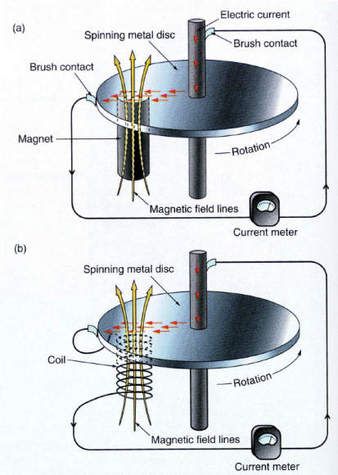-
 Sodium
Sodium
-
 LINAC
LINAC
-
 Gluon
Gluon
-
 Spitzer
Spitzer
-
 Pan
Pan
-
 Analogue
Analogue
-
 Permanent world
Permanent world
-
 Taurids
Taurids
-
 CD-RW
CD-RW
-
 Codon
Codon
-
 Asthenia
Asthenia
-
 Gammarus
Gammarus
-
 Wandering albatross
Wandering albatross
-
 Neuroglia
Neuroglia
-
 Renewable energy
Renewable energy
-
 Black drop
Black drop
-
 Superconductivity
Superconductivity
-
 Carpus
Carpus
-
 Organic Pollution
Organic Pollution
-
 Main cryogenic stage
Main cryogenic stage
-
 Radio data network
Radio data network
-
 Asterism
Asterism
-
 Fissure
Fissure
-
 Shark feeding
Shark feeding
-
 Standardisation
Standardisation
-
 Pulmonary plague
Pulmonary plague
-
 Albumin
Albumin
-
 Constellation of Ursa Major
Constellation of Ursa Major
-
 IFREMER
IFREMER
-
 Möbius strip
Möbius strip
Dynamo effect
The dynamo effect refers to a set of theories to explain how a magnetic field is generated in a celestial body such as the Earth.
It is the self-generation of a magnetic field by a conducting body moving in an initially weak or zero magnetic field. The idea is that a current producing a magnetic field is itself produced by the magnetic field that it generates, in the same way that a dynamo produces current. This is sometimes called a self-exciting dynamo in this context. Many physicists have tackled this question, but the first sound theoretical results were not obtained until the fifties and sixties by researchers such as Eugène Parker and, mainly, Stanislav Braginsky.
It was first applied to the Earth, and the same process would explain the magnetic fields of the Sun, the planets and other bodies in the universe such as galaxies and magnetars.
A collaboration of various researchers, VKS, recently managed to reproduce the effect, which in the Earth must begin in the liquid ferrous core, from liquid sodium rotating turbulently.
But in spite of this, the theoretical understanding of this phenomenon is still not perfectly understood and there remain areas of uncertainty.
 Diagram showing the principle of the self-exciting dynamo to explain the Earth's magnetic field and that of other bodies (Credit: Seth Stein).
Diagram showing the principle of the self-exciting dynamo to explain the Earth's magnetic field and that of other bodies (Credit: Seth Stein).
Latest
Fill out my online form.



